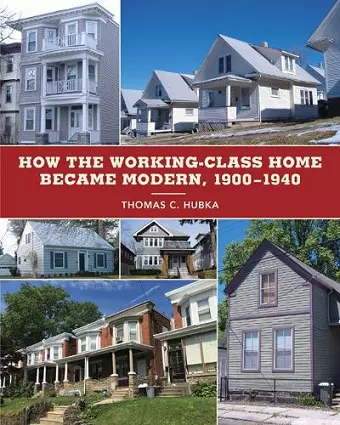How the Working-Class Home Became Modern, 1900–1940
Format:Paperback
Publisher:University of Minnesota Press
Published:8th Dec '20
Should be back in stock very soon

The transformation of average Americans’ domestic lives, revealed through the mechanical innovations and physical improvements of their homes
At the turn of the nineteenth century, the average American family still lived by kerosene light, ate in the kitchen, and used an outhouse. By 1940, electric lights, dining rooms, and bathrooms were the norm as the traditional working-class home was fast becoming modern—a fact largely missing from the story of domestic innovation and improvement in twentieth-century America, where such benefits seem to count primarily among the upper classes and the post–World War II denizens of suburbia. Examining the physical evidence of America’s working-class houses, Thomas C. Hubka revises our understanding of how widespread domestic improvement transformed the lives of Americans in the modern era. His work, focused on the broad central portion of the housing population, recalibrates longstanding ideas about the nature and development of the “middle class” and its new measure of improvement, “standards of living.”
In How the Working-Class Home Became Modern, 1900–1940, Hubka analyzes a period when millions of average Americans saw accelerated improvement in their housing and domestic conditions. These improvements were intertwined with the acquisition of entirely new mechanical conveniences, new types of rooms and patterns of domestic life, and such innovations—from public utilities and kitchen appliances to remodeled and multi-unit housing—are at the center of the story Hubka tells. It is a narrative, amply illustrated and finely detailed, that traces changes in household hygiene, sociability, and privacy practices that launched large portions of the working classes into the middle class—and that, in Hubka’s telling, reconfigures and enriches the standard account of the domestic transformation of the American home.
"In this groundbreaking study, Thomas C. Hubka examines the surprisingly ill-equipped houses of the broad middle class at the beginning of the twentieth century, charting the changes to the floor plan and the introduction of new technologies. Amply illustrated, Hubka’s study redefines the middle class and reinterprets its housing, offering a new understanding of how most Americans became modern."—Alison K. Hoagland, author of Mine Towns: Buildings for Workers in Michigan's Copper Country
"This book is the most important study of common American houses to appear in the past half century. Thomas C. Hubka draws on a lifetime’s investigation of working-class houses in the decades before World War II to show us how and why the single-family houses of the contemporary ‘middle-majority’ sprung from these modest dwellings. Hubka has established an agenda that should engross architectural historians for years."—Dell Upton, author of American Architecture: A Thematic History
"Architects, historians, housing advocates, and other people interested in the houses most Americans live in should find much to like in How the Working Class Became Modern."—Daily Dose of Architecture
"This lavishly illustrated book takes the reader on a visual journey of all types of common houses belonging to America’s ‘middle majority.’"—Technology and Culture
"Hubka’s book becomes the new bible of this architecture for material culture studies, architectural historians, and sociologists. "—CHOICE
"Hubka rises to the challenge of analyzing such a large number of structures (somewhere upwards of 80 million houses) on a national level."—Winterthur Portfolio
"Collectors will find the book illuminating for its contextual factors: the space and the place where collections reside."—New York-Pennsylvania Collector
- Winner of VAF Lowell 2021
- Winner of Mary Washington 2021
- Commended for CHOICE 2021
ISBN: 9780816693016
Dimensions: 254mm x 203mm x 38mm
Weight: unknown
320 pages